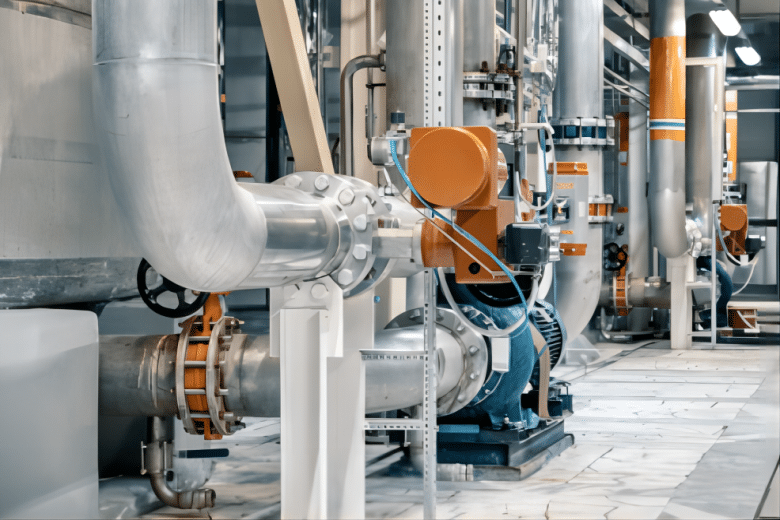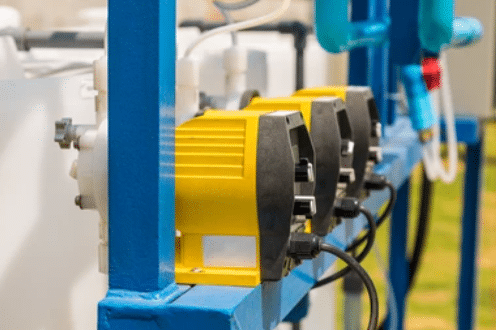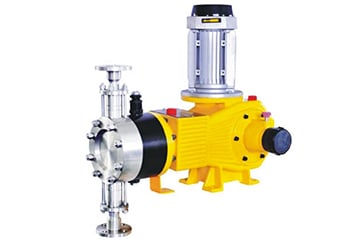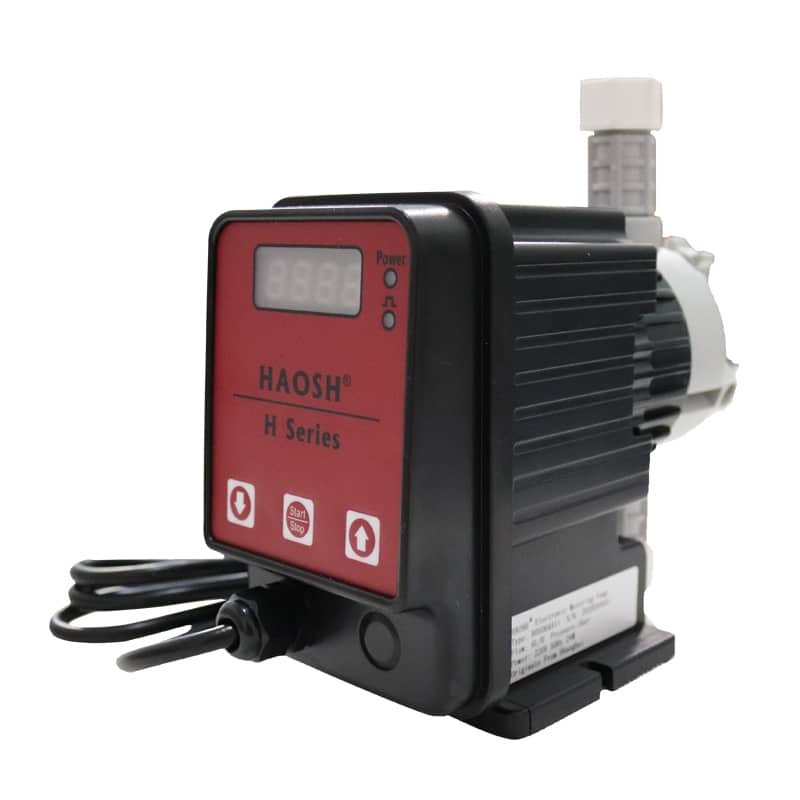Proportioning Pump

In the field of liquid handling, precise proportional delivery is crucial, especially in applications such as chemical dosing, liquid mixing and proportioning. To meet this need, Proportioning Pumps have become an important technological solution.
Proportioning Pump
What is a proportioning pump?
Proportional pump is another name for metering pump. It refers to the chemical production often have more than one metering pump at the same time by a motor drive work, the pump is according to a certain proportion of the flow rate of the input of a variety of materials. It is also known as a mixing pump. This type of pump is capable of mixing two or more different liquids together in a specific ratio in order to achieve the desired concentration or proportion for a particular application. The outstanding feature of metering pump is that it can maintain a constant flow rate independent of the discharge pressure, and can simultaneously fulfill the functions of conveying, metering and regulating to simplify the production process. When multiple units are used together, several kinds of media can be input into the process according to the exact ratio of mixing.

How does it work?
Different liquids are pumped into the mixing unit by adjusting the flow or speed of different pumps so that the desired proportions are precisely achieved.
Pump Head Construction: Proportioning pump typically consist of two or more pump heads, each responsible for delivering a different liquid chemical. Each pump head consists of a piston or plunger and a sealed chamber that moves with it.
Pump Control: Proportioning pumps are usually controlled by a control system that can be pre-set to the desired ratio of chemicals. The control system can adjust the pump’s operating rate based on input parameters for precise proportional control.
Pharmaceutical Injection: Each pump head operates at a precise rate based on a preset rate and ratio. As the pump head moves, a piston or plunger creates pressure in the chamber that draws and pushes the agent into the fluid system.
Mixing: The chemicals delivered by the different pump heads are mixed in the fluid and proportioned according to a set ratio. To ensure that the chemicals delivered by the different pump heads are well mixed and remain homogenous, it may be necessary to use an agitator to aid in the mixing. This ensures precise chemical dosing to meet the requirements of a particular application.
Flow Control: The operating rate of the proportional pumps can be adjusted by the control system to control the amount of chemical being delivered. This makes it easy to adjust the proportions of the chemicals for different needs.
Chemical Dosing System: Chemical dosing system is a system used to add precise proportions of chemicals to fluids in industry, water treatment, environmental protection and other fields. By adjusting its pumping rate to achieve the precise proportion of different chemicals mixed, thus guaranteeing the effectiveness and stability of the treatment process.
Application Areas Of Proportional Pumps
- Chemical industry
- Food and beverage industry
- Pharmaceutical industry
- Waste water treatment industry
- Mining industry
- Oilfield industry
- Agricultural industry
How to calculate pump speed ratio?
Calculating the pump speed ratio of a proportional pump involves the ratio of two liquid flow rates and is usually calculated using the following formula:
Pump Speed Ratio = Q1 / Q2
Where Q1 is the flow rate of the primary liquid and Q2 is the flow rate of the secondary liquid. This ratio helps you determine the proportion of speed at which the two liquids are delivered in a proportional pump. Proportional pumps are often designed with pump speed ratios based on specific application requirements to ensure accurate mixing and delivery. When selecting and configuring a proportional pump, it is important to ensure that the pump speed ratio is accurately calculated to meet the needs of the specific application.
Proportional pump structure
- Pump Head: The core component of a proportional pump, responsible for transferring liquid into the system. The pump head usually includes an inlet, outlet, and exhaust port.
- Drive Unit: Proportional pumps usually use electric motors, air motors or other types of drive units to drive the pump head and make it run.
- Control Unit: Proportional pumps are usually equipped with a control unit for adjusting the flow rate ratio and operating parameters of the pump. The control unit can be a manual control, an automatic control or a programmable control system.
- Proportional Regulator: Used to adjust the flow ratio of the pump, either manually or automatically, to ensure the desired mixing or filling ratio.
- Liquid Storage Containers: Liquid storage containers are used to store different proportions of liquids for use in proportional pumps. These containers can be of various capacities and types and are selected according to the needs of the application.
- Accessories and Piping: Proportional pumps typically require accessories such as piping, valves, connections, etc. in order to transport the liquid from the storage container to the desired location.
Types of proportional pumps
Plunger pumps: Chemical feed pumps are also a type of plunger pump. Plunger pumps achieve proportional control by controlling the reciprocating motion of the piston, thus realizing precise mixing and delivery of liquids. Piston pumps are suitable for applications requiring high-precision, high-pressure fluid transfer, such as chemical dosing and high-precision liquid mixing. Hydraulic dosing pumps usually use a piston to push the chemical, HAOSH HY-ZR Hydraulic Dosing Pump is a good choice.

Dosing Pump: Solenoid dosing pump is a common type of proportioning pump, which is driven by electromagnetism to realize the precise dosing of chemicals. It can control the amount of different chemicals to be dispensed according to a preset flow rate ratio, thus realizing precise proportionality. And they are corrosion-resistant, have good self-priming ability, and can effectively treat liquids containing flocculants. This makes solenoid dosing pumps very useful in chemical dosing, liquid mixing, and other applications that require precise proportional dosing. H solenoid dosing pump is cost-effective, overload-proof and adaptable to existing signal transducers.
Diaphragm Metering Pumps: Diaphragm metering pumps mix and transfer liquids through the movement of diaphragms and can be used to precisely control the ratio of different liquids. HZ mechanical dosing pump is an extremely robust mechanical metering pump with a built-in safety diaphragm for excellent process reliability.


Progressive Cavity Pumps: Progressive cavity pumps can be used to precisely mix and transfer two or more liquids, controlling the flow rate ratio based on the design and rotation of the screw.
Gear Pumps: Gear pumps mix and transfer liquids through the movement of gears and are suitable for applications requiring precise proportionality.
Centrifugal Pumps: Although centrifugal pumps are not typically classified as proportional, some degree of proportional control can be achieved in some applications by adjusting the speed of rotation and the opening of the outlet valve.
Advantages and Disadvantages of Diaphragm Pumps and Piston Pumps
| Piston Pumps | Diaphragm Pumps | |
| Advantages | High pressure for high pressure fluid transfer | Highly controllable flow and pressure |
| Precise flow control | Leak-free, suitable for leak-prone liquids | |
| Accommodates high viscosity fluids | Self-priming, no need to introduce external fluids | |
| Suitable for precision chemical processing and the dye industry | Suitable for corrosive and hazardous liquids | |
| Disadvantages | Risk of partial leakage | Higher energy consumption and relatively low efficiency |
| Complex maintenance and susceptibility to wear and tear | Sensitive to liquid properties and particle size | |
| Relatively high energy consumption | Requires high air supply |
What is a Variable Speed Drive (VSD)?
A variable speed drive, also known as an inverter or variable frequency drive, is a device used to control the speed and output power of an electric motor. It adjusts the frequency and voltage supplied to the motor in order to achieve adjustable speed operation of the motor.VSDs are able to dynamically adjust the speed of the motor according to system requirements, resulting in energy savings, improved efficiency, and more precise process control.
By adjusting the output frequency of the variable speed drive, the speed of the motor can be varied, which in turn varies the operating speed of the proportional pump, which in turn affects the flow rate and pressure. This combination can play an important role in applications such as chemical dosing and liquid proportioning that require precise control of liquid delivery and mixing ratios. It applies to pumps of hydraulic diaphragm or filled plunger design. It excludes rotary and diaphragm pumps that use direct mechanical drives.
What is API 675?
API 675 is a standard developed by the American Petroleum Institute (American Petroleum Institute, or API), and its full name is “Positive Displacement Pumps – Controlled Volume for Metering Applications”.
Summary
The Proportioning Pump, a key technology for precise liquid proportioning, provides an efficient and accurate solution for production and handling processes in a number of areas. Whether it is to increase efficiency, reduce waste or ensure product quality, these pumps play an irreplaceable role. HAOSH is the world’s leading brand of fluid control equipment, specializing in dosing and metering pumps and system development. With precise liquid ratio placement, we increase efficiency and reliability, optimize your processes and save resources at the same time. Our product range covers dosing metering pumps, pump accessories, mixing agitators and dosing systems to ensure your success. Please feel free to contact us.
